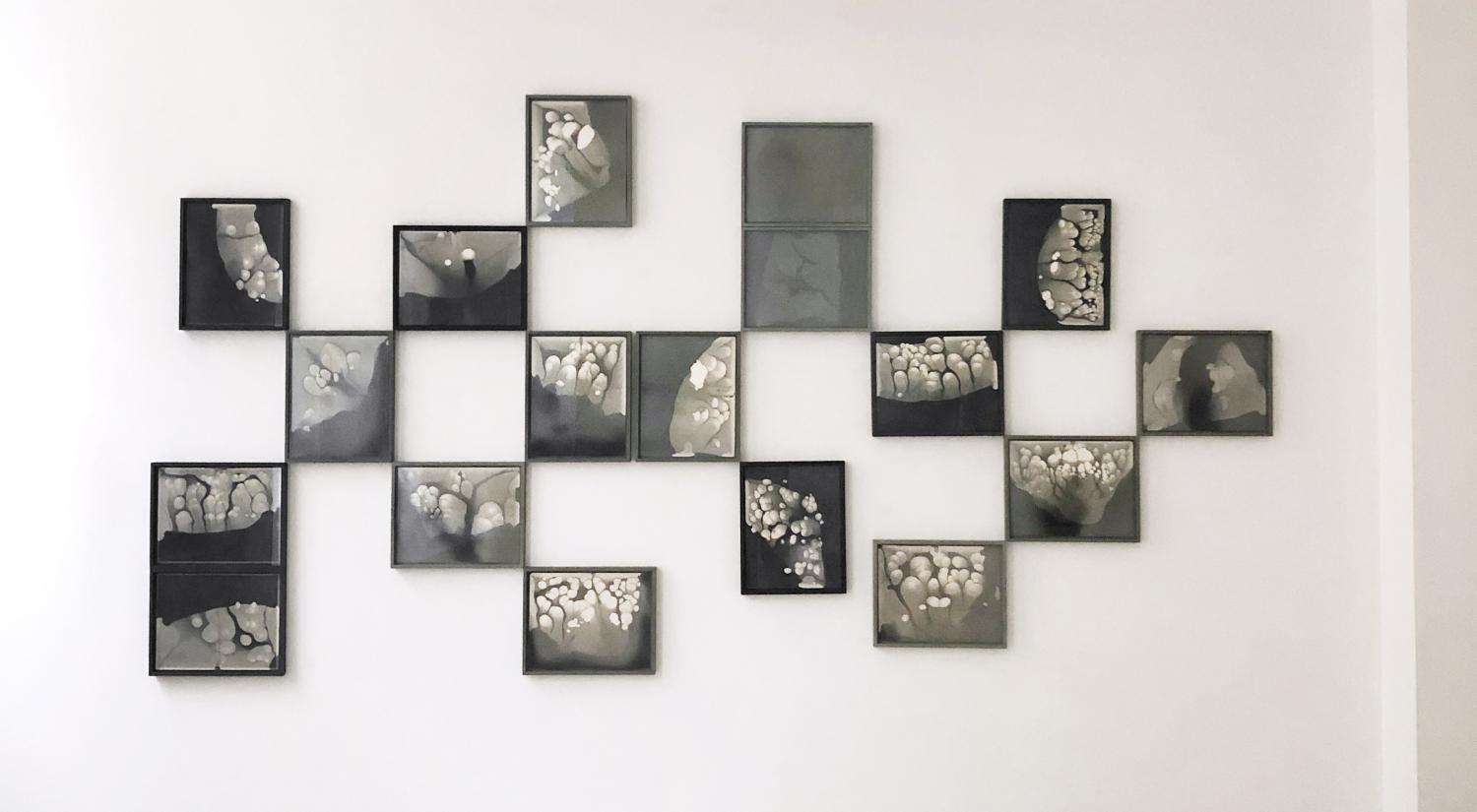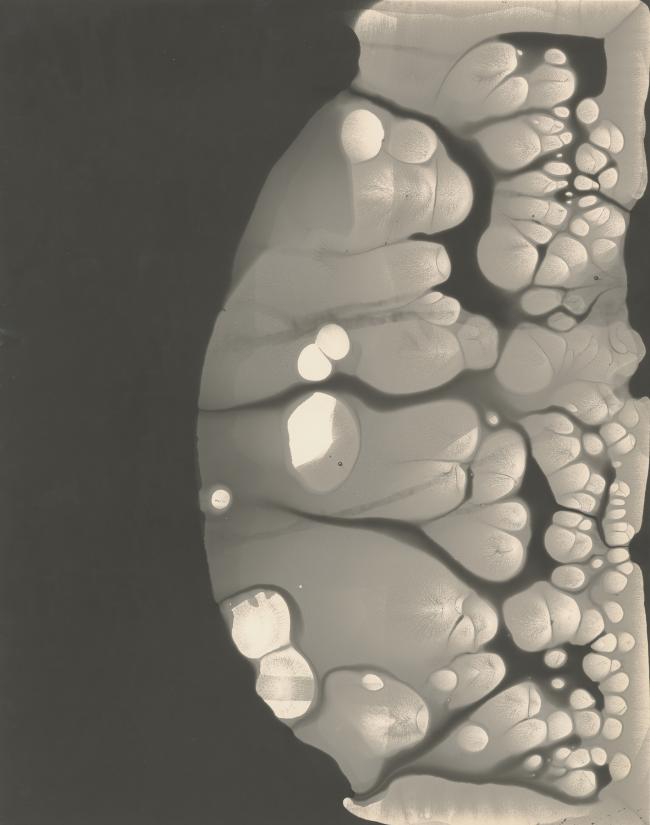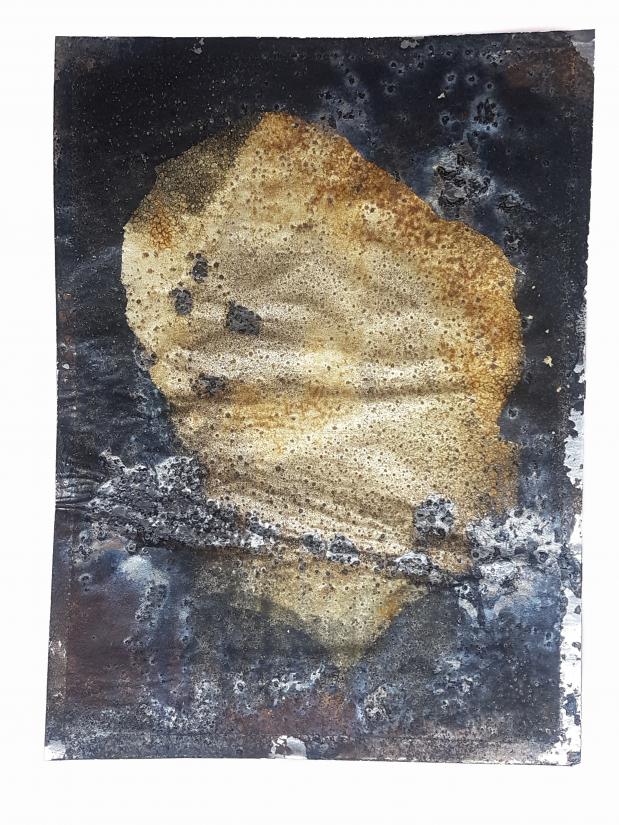Nicolai Howalt’s work combines natural science and visual art. The series Elements and Silver Migration were created just a few years apart. With funding from the New Carlsberg Foundation, Musée de l’Elysée has now acquired 26 pieces from them. In the two series Nicolai Howalt explores photography through the perspectives of time, light, materiality and immateriality. Both series are good examples of the current renewal of classic photographic techniques that is happening in contemporary art.
An alchemistic photo project
In the 2016 Elements series Nicolai Howalt examines the transformative aspect in elements such as gold, silver, copper and iron by transferring photosensitive emulsions to sheets of different metals. This emulsion includes silver bromide, which has photosensitive properties. The series thus explores the nature and possible transformation of the elements. Howalt undertakes this examination by first photographing the elements in their pure form and then transferring and developing the photos on sheets of different materials, including aluminium, brass or iron. The transformations of the elements thus become the artwork itself, which takes on a unique tactual quality in the picture surface. The visibility and discernibility of the image depends on the material. The experiments have different outcomes. Thus, the finished work of art is determined by the photographic processes.
Elements is an experiment where Howalt embraces what lies outside our control. It is an artistic exploration based on the more or less random process in the development of the photographs.
Recognizable forms on expired photographic paper
The 2018 Silver Migration series similarly examines the chemical resources of photography. Silver Migration consists of old photographic from 1962 and shows how the expression of the paper changes as it ages. In this series, Howalt does not use light or a camera; instead, the works exclusively show the chemical development resulting from time and moisture. Shades of grey and white reveal a world of microorganisms in the paper. Is the individual work a photograph or a variation on readymades? Howalt is interested in the chemical processes of photography and the patterns that emerge when the expired photographic paper is affected by chemical decomposition. He is also interested in ‘pareidolia’, a psychological phenomenon that makes the brain look for images in abstraction. This reaction in the human brain prompts us to find recognizable elements in otherwise image-less forms in an attempt to understand the world we navigate in. In Silver Migration, abstract patterns thus emerge in which the viewer may discern familiar forms.
PLATFORME 10
Musée de l’Elysée, which acquired pieces from the two series, is located in Lausanne, Switzerland, and has art photography as its main focus. The museum is closed from September 2020 to autumn 2021, after which time it becomes part of the ambitious museum project PLATFORME 10, which brings together three of the biggest cultural institutions in Lausanne in one location.
About Nicolai Howalt
Nicolai Howalt (b. 1970) lives and works in Denmark. He graduated from Fatamorgana, the Danish school of art photography, in 1992 and has exhibited in museums such as ARoS, Esbjerg Art Museum, SMK – the National Gallery of Denmark and several galleries abroad. He is also represented in multiple collections, including Medical Museion, Skagens Museum, Det National Museum of Photography, The Israel Museum in Jerusalem and The J. Paul Getty Museum in California. Howalt’s early work revolved around mortality and the fragility of life. His later works focus on materiality and chemical processes, including the two series Elements and Silver Migration.






